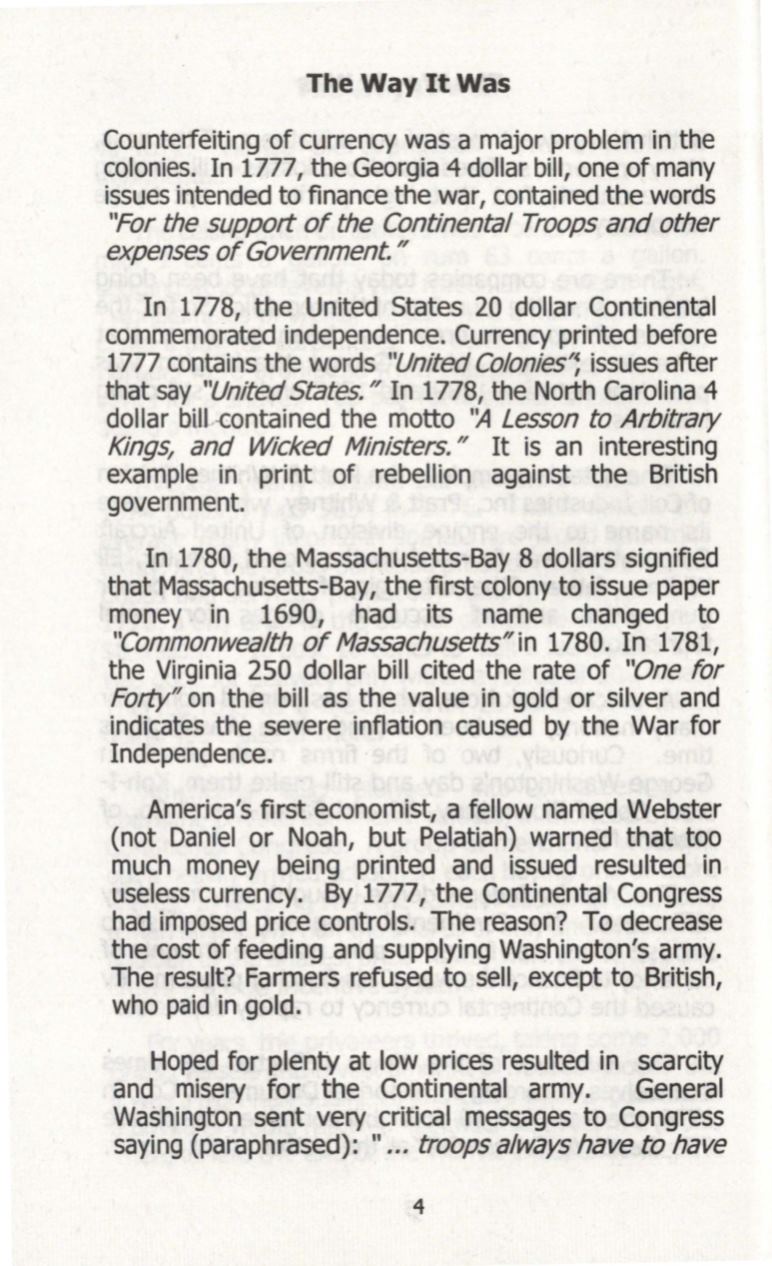

The Way It Was
Counterfeiting of currency was a major problem in the
colonies. In 1777, the Georgia 4 dollar bill, one of many
issues intended to finance the war, contained the words
"For the support of the Continental Troops and other
expenses ofGovernment.
"
In 1778, the United States 20 dollar Continental
commemorated independence. Currency printed before
1777 contains the words
"United Colonies'!
issues after
that say
"UnitedStates."
In 1778, the North Carolina
4
dollar bill.-contained the motto
'11
Lesson to Arbitrary
Kings, and Wicked Ministers."
It
is an interesting
example in print of rebellion against the British
government.
In 1780, the Massachusetts-Bay 8 dollars signified
that Massachusetts-Bay, ·the first colony to issue paper
money in 1690, had its name changed to
"Commonwealth of Massachusetts"in
1780. In 1781,
the Virginia 250 dollar bill cited the rate of
"One for
Forty"
on the bill as the value in gold or silver and
indicates the severe inflation caused by the War for
Independence.
America's first economist, a fellow named Webster
(not Daniel or Noah, but Pelatiah) warned that too
much money being printed and issued resulted in
useless currency. By 1777, the Continental Congress
had imposed price controls. The reason? To decrease
the cost of feeding and supplying Wa$hington's army.
The result? Farmers refused to sell, except to Briti.sh,
who paid in
gold~
Hoped for plenty at low prices resulted in scarcity
and misery for the Continental army.
General
Washington sent very critical messages to Congress
saying (paraphrased): " ...
troops always have to have
4
















